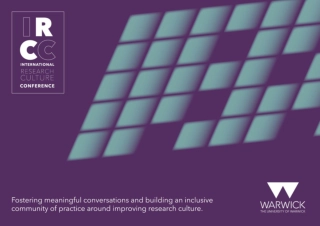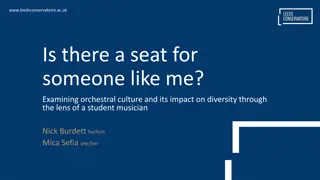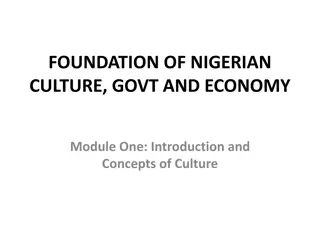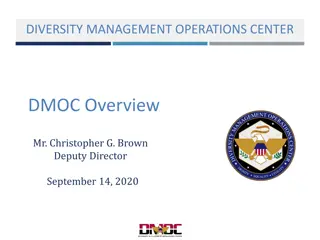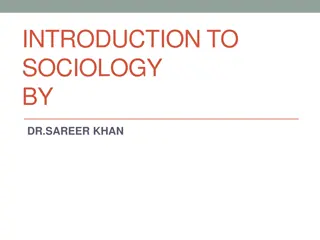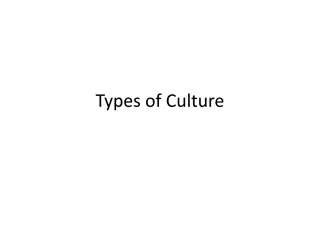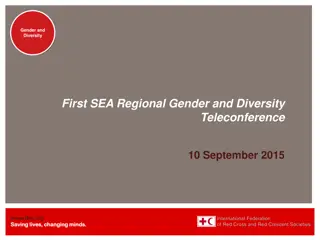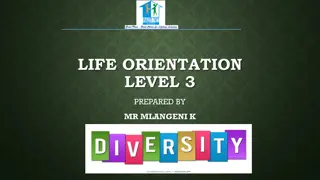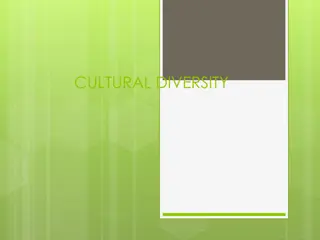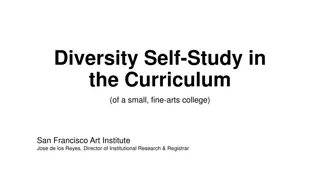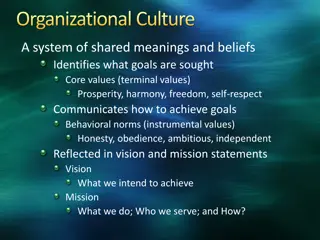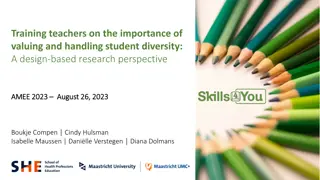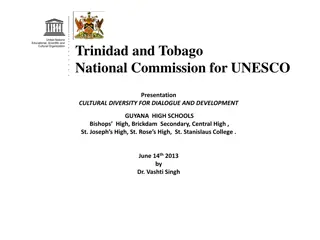Understanding Work Culture and Diversity in Educational Settings
Exploring the concept of work culture in education, this content delves into defining work culture, diversity, culturally responsive practices, race, ethnicity, achievement gap, and opportunity gap. It emphasizes the importance of acknowledging and addressing social inclusiveness, educational disparities, and ways to make learning more effective and equitable for diverse student groups.
Download Presentation

Please find below an Image/Link to download the presentation.
The content on the website is provided AS IS for your information and personal use only. It may not be sold, licensed, or shared on other websites without obtaining consent from the author. Download presentation by click this link. If you encounter any issues during the download, it is possible that the publisher has removed the file from their server.
E N D
Presentation Transcript
Science Instructional Materials PD Markisha Smith, Ed. D. Director of ODE Equity Unit July 14, 2016
Defining the Work Culture refers to the cumulative deposit of knowledge, experience, beliefs, values, attitudes and religion by a group of people generally without thinking about them.
Defining the Work Diversity refers to the state of social inclusiveness; including, but not limited to race, ethnicity, socioeconomics, gender, religion, age, language, and/or sexual orientation within a group, society, or organization.
Defining the Work Culturally Responsive refers to the implicit use of the cultural knowledge, prior experiences, frames of reference, and performance styles of diverse individuals (students) in order to make learning more appropriate and effective for them.
Defining the Work Race refers to a recent idea (social construct) created by western Europeans following exploration across the world to account for differences among people and justify colonization, conquest, enslavement, and social hierarchy among humans. It is most often linked to a person s physical appearance such as skin color, eye color, hair color, etc.
Defining the Work Ethnicity refers to cultural factors such as nationality, place of origin, ancestry, beliefs, etc. Ethnicity is often characterized by cultural features, such as dress, language, religion, and social organization.
Defining the Work Achievement Gap refers to the gap in assessment outcomes for students of color and English Learners; most often seen in shared state assessment data.
Defining the Work Opportunity Gap refers to the ways in which race, ethnicity, socioeconomic status, English proficiency, community wealth, familial situations, or other factors contribute to or perpetuate lower educational aspirations, achievement, and attainment for certain groups of students; places limitations on appropriate resources as a result.
Defining the Work Intent vs. Impact The Belief Gap
Defining the Work Equity (Education Equity) refers to the transformed ways in which systems and individuals habitually operate to ensure that every individual (learner) in whatever environment (learning) has the greatest opportunity to work (learn) enhanced by the resources and supports necessary to achieve competence, excellence, independence, responsibility, and self-sufficiency for life. (school)


